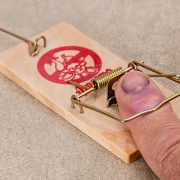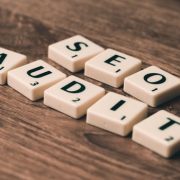How To Leverage The Buyer Journey To Increase Your AUM
What’s the relationship between the buyer journey and selling? (if you haven’t read my post on the definition of the buyer journey, make sure you read that one first before moving on.)
Well, as it turns out, the entire profession is changing and traditional selling and relationship techniques are becoming less effective because buyers are becoming more knowledgeable. In fact, they’re coming to the table with more knowledge than ever before and it’s making sales people too transactionally focused (i.e. order takers — please make this trade or please sell this fund).
Understanding the journey can help you connect with your client or prospect on a much more fundamental level. If you’re a financial or insurance advisor who excels, you’ve likely adopted the technique of understanding your buyer’s journey without even knowing it. When you connect with your clients or prospects throughout this journey, it will help you build trust. Why? Because each stage is buyer centric and not sales centric. The buyer doesn’t physically buy or decide to buy until after they diagnosed their problem and are satisfied with their list of solutions to solve that problem. Asking for the sale too early, makes you disingenuous and breaks trust because you’re just in front of the client or prospect for you, not them.
What does this have to do with AUM? What is the relationship between AUM and trust? Well, with my limited financial advice knowledge, AUM is basically all about the amount of money (measured in market value) that an investment company manages on behalf of investors. Is it safe to assume that the more trust that a client or prospect has with you the more they are willing to invest with you and thus increase your AUM? Well, according to Joachim I. Krueger, from Psychology Today, interpersonal trust is defined as the willingness to invest in another in hopes of being rewarded with reciprocity, while accepting the risk of being betrayed. According to this definition, increasing trust levels with your clients, enables a desire to invest in you as an individual and by doing so, they hope to be rewarded with, for example, the reciprocity of service, advice and financial gain and they accept the risk of loss. Higher trust = higher willingness to invest (i.e. higher AUMs).
Here are 3 rules I follow when working your way towards serving your clients or prospects at each stage of the buyer journey:
- Be helpful. If they are in the awareness stage, work with them to help them identify the complete picture of their symptoms. If they are in the consideration stage, send them helpful articles or connect them to people who might know more about problem they are experiencing than you do.
- Don’t ask for the sale too early. In the movie Glengarry Glen Ross you hear the term ABC – Always Be Closing. This only applies to buyers who are at the end of their buying journey. Yes, I know, you want to make the sale, you want to be the solution to your buyer’s problem, but that might not serve the interests of your buyer and it won’t help you establish trust. Asking too early could actually break trust.
- Be authentic. If they are in the decision stage, presenting them with 2 solutions you know they’ll never choose and then your solution isn’t authentic. Have confidence in your practice and business and place competitive solutions beside yours. It will help you weed out customers who might not fit your business and it will help you improve your services or products. Remember the relationship you are trying to establish and the types of individuals you are looking to acquire as clients. For example, clients who are price shopping (vs value shopping) will always choose the cheapest option no matter what. Even if you win their business today, they are bound to be troublesome and costly later.
—————————————————————
Have you ever used any of these techniques in your selling practice?











